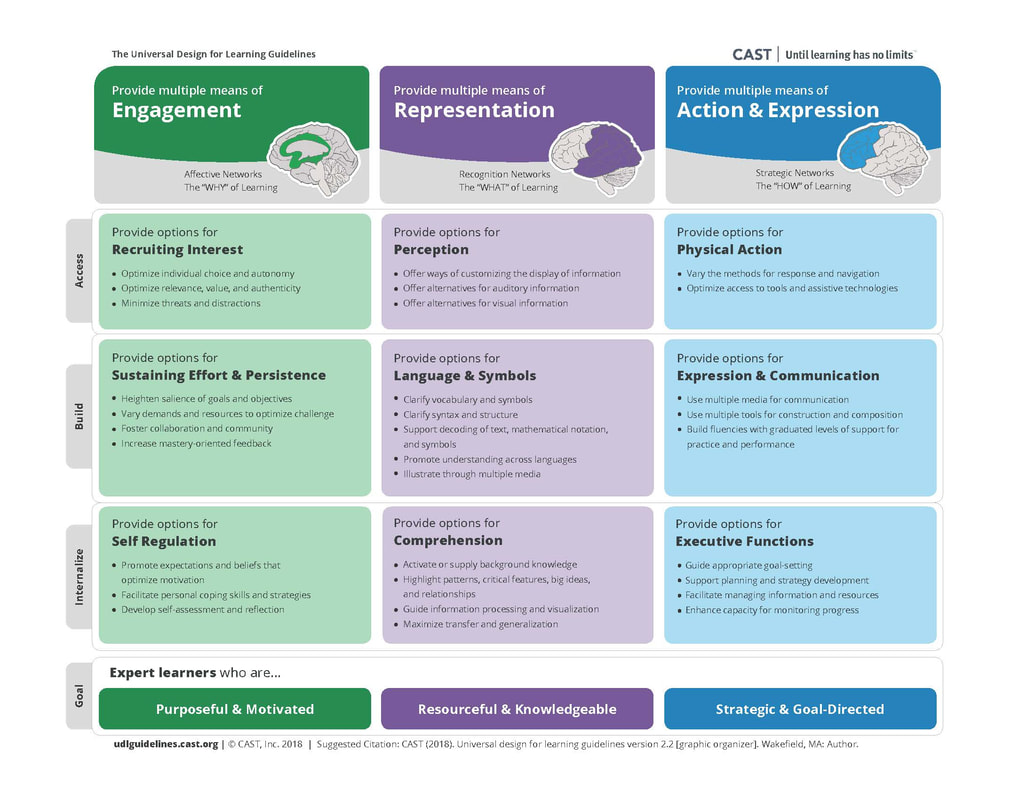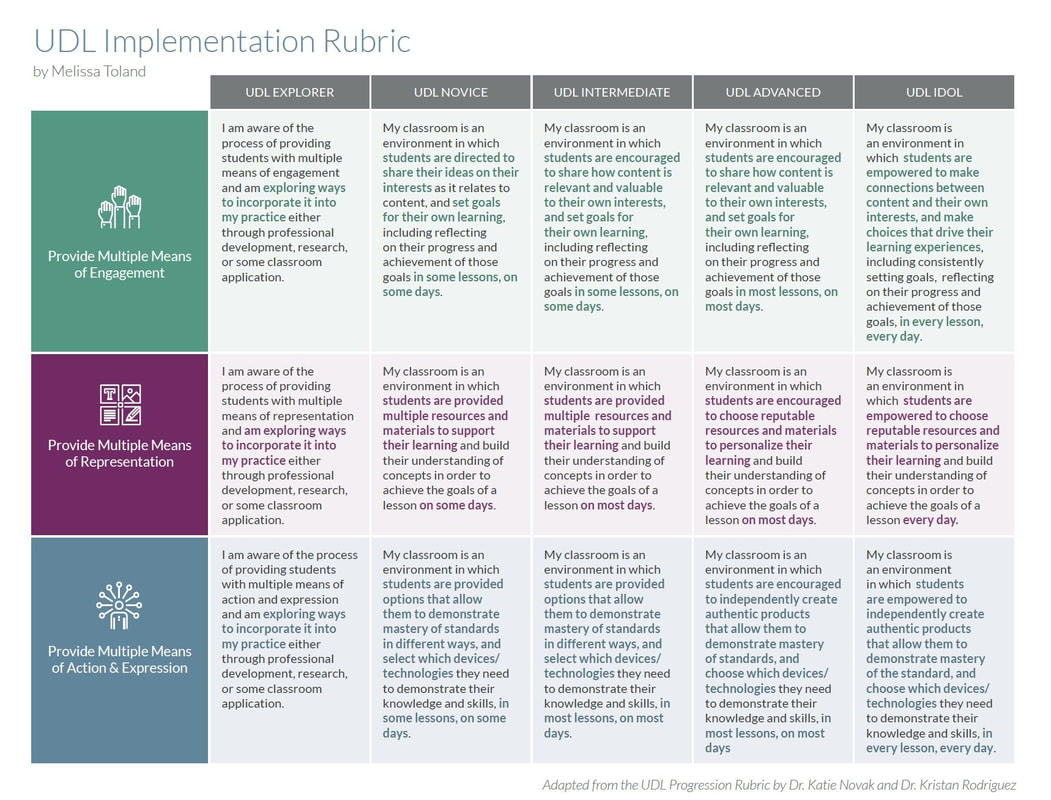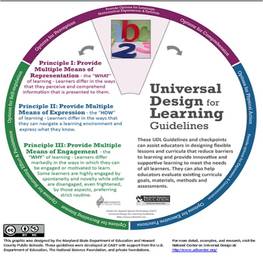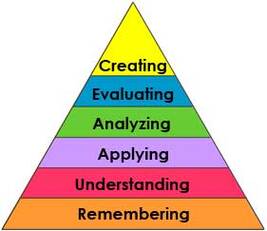UDL Tools For All Grades and Subject Areas
|
CAST UDL Guidelines
The two files below outline the UDL guidelines by multiple means of representation, multiple means of action & expression, and multiple means of engagement. Knowing the UDL guidelines assists with the planning of lessons that implement the principles of UDL. Both files have the same information, but show it differently. Feel free to use whichever format is best for you.
| |||||||||||||
|
Check out this link from CAST - UDL Guidelines Explained
- Easy-to-follow explanations of the UDL guidelines - Practical suggestions on how to implement the UDL guidelines |
Check out this link from CAST - Online Resources
- Online resources that support each principle of UDL - Resources are conveniently grouped by principle |
UDL Implementation Rubric
The UDL Implementation Rubric was authored by Melissa Toland, and you can read more about it here. This is an adapted version of The UDL Progression Rubric by Dr. Katie Novak and Dr. Kristian Rodriguez. In the original version, teachers can self-evaluate their performance on each individual checkpoint of the UDL guidelines, whereas the adapted version is less specific in scope and focuses on performance in more general terms in the following areas: multiple means of engagement, multiple means of representation, and multiple means of action and expression. You can view this rubric to see where you may be in your UDL journey across a spectrum ranging from UDL explorer to UDL idol. Click the link below to download the pdf version of this document.
| UDL Implementation Rubric | |
| File Size: | 55 kb |
| File Type: | |
|
UDL Lesson Plan Template
This file is a template that you can use to write universally designed lesson plans. If would like to see examples that use this template, you can view them in UDL Lessons - Grade 2, UDL Lessons - Grade 3, and UDL Lessons - Grade 4
|
UDL Daily Planner
This file is a template that can be used in a classroom teacher's daily planner book. It provides space to write in or type the directions for a lesson in any subject. This template also features helpful checklists for the UDL guidelines, technology, and Multiple Intelligences.
| ||||||||||||
|
UDL Wheel
The UDL wheel from CAST features two parts of a wheel that can be easily assembled. It gives teachers concrete examples of how to apply the principles of Universal Design for Learning (examples of providing options for language and symbols include: pre-teaching vocabulary and symbols; presenting information with illustrations, photographs, tables, models, animation, dance/movement, comic strips, etc).
| |||||||
|
UDL Quick Tips
This document from Colorado State University has many helpful tips that help bring UDL theory to practice. For each of the guiding principles (multiple means of representation, multiple means of action and expression, and multiple means of engagement), this document outlines objectives, instructional materials, teaching methods, and assessment methods. These tips can be applied to any subject area.
|
UDL Instructional Planning Process
This document from UDL-IRN (The Universal Design for Learning Implementation and Research Network) outlines steps that teachers can follow in planning lessons and materials following the principles of Universal Design for Learning. These tips can be applied to any subject area.
| ||||||||||||
|
Bloom's Taxonomy
Questions asked at varying levels of complexity makes it possible to include the greatest number of students, and also helps to make the subject matter more engaging for everyone. Bloom's Taxonomy compliments the principles of Universal Design for Learning because it allows students to learn about the same content at varying levels of complexity. Check out this link for lists of iPad apps that support Bloom's Taxonomy.
| |||||||||||||||




